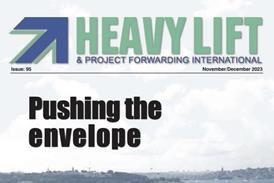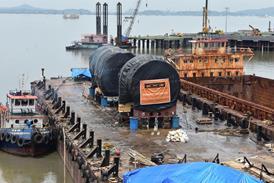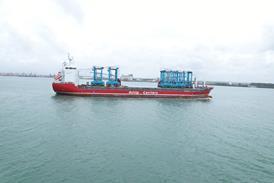August 6 - Ocean carriers are increasingly resorting to leasing and chartering to acquire vessels and container equipment, says maritime research agency Drewry, which is resulting in opportunities for new players to enter the market.
According to Drewry's research, the way that vessels and containers are being ordered indicates that ocean carriers are set to become significantly asset light over the next couple of years; 64 percent of all vessel capacity ordered since the middle of 2011 has been placed by tramp vessel operators, and the proportion since the middle of 2012 is higher at 65 percent.
This follows on from a trend started in 2004, when the proportion of the top 20 carriers' fleet that was chartered stood at 48 percent and climbed to 53 percent in 2011. Although, the position of the top 10 in isolation shows a different picture - with ownership increasing between Q3 2011 and the first half of 2013 - see figure 1.
|
| Figure 1 |
If the world's largest tramp vessel operator - Reederei C O Offen -was included in Drewry's industry ranking of top 20 carriers, it would appear in third position, in terms of chartered capacity.
Most of the other top 20 carriers have resorted to long-term leasing and short-term charters. CIMC's recent order for seven 8,800 teu vessels is backed by a charter agreement with MSC lasting up to 17 years, according to Drewry.
Drewry says that if we assume that not all carriers renew lease agreements on expiry there will be a growing pool of large container vessels available for hire. Which opens up opportunities for new entrants to the market.
It is difficult to predict for how long the trend of increased vessel leasing/chartering will go on for, as it has been driven mainly by financial necessity. Cash flows remain tight and leasing spreads the financial burden of asset acquisition over a longer period of time.
Vessel ownership requires large shipyard deposits and loan repayment typically within eight years. Leasing is also a tactic used to make a company's balance sheet look better, but this may no longer be the case post-2017 due to a proposed alteration of accounting standards.
The same trend applies to container equipment ownership, says Drewry, where leasing has also become an important tool. According to Drewry's latest Container Lease Industry Review 2013, lessors purchased 58 percent of all newbuild container capacity in 2012. Lessors also acquired substantial amounts of older equipment from ocean carriers through sale and lease back. As shown in figure 2, this enabled lessors to grow market share from 42.8 percent in 2011 to 45 percent in 2012.
|
| Figure 2 |
"As ocean carriers' financial results are not expected to improve significantly before 2016, leasing will continue to grow, thereby creating opportunities for new financiers to enter the market. Although still some way away, the pool of large containerships available for charter will grow, with a wide variety of possible consequences," said a Drewry spokesperson.


















